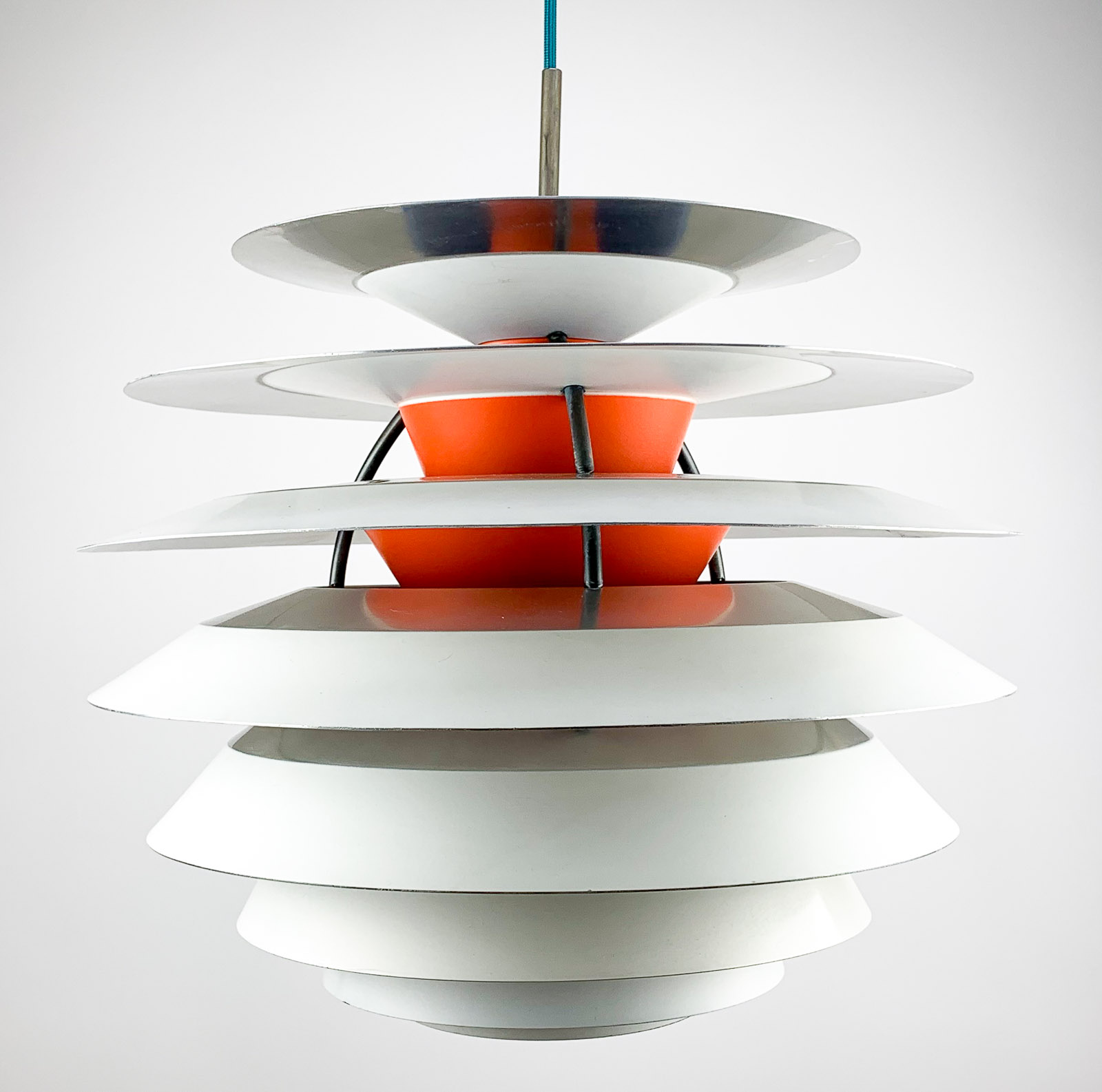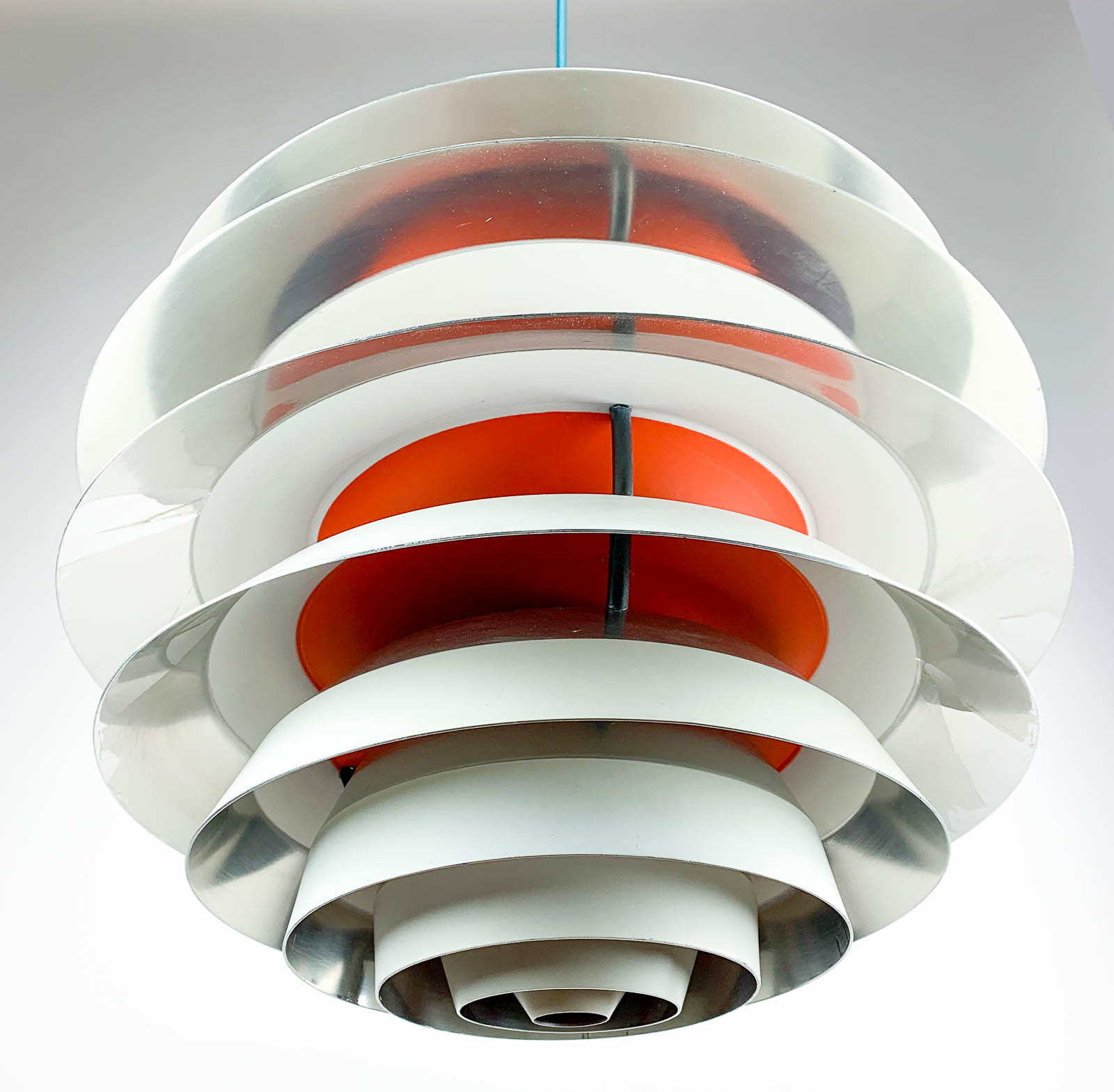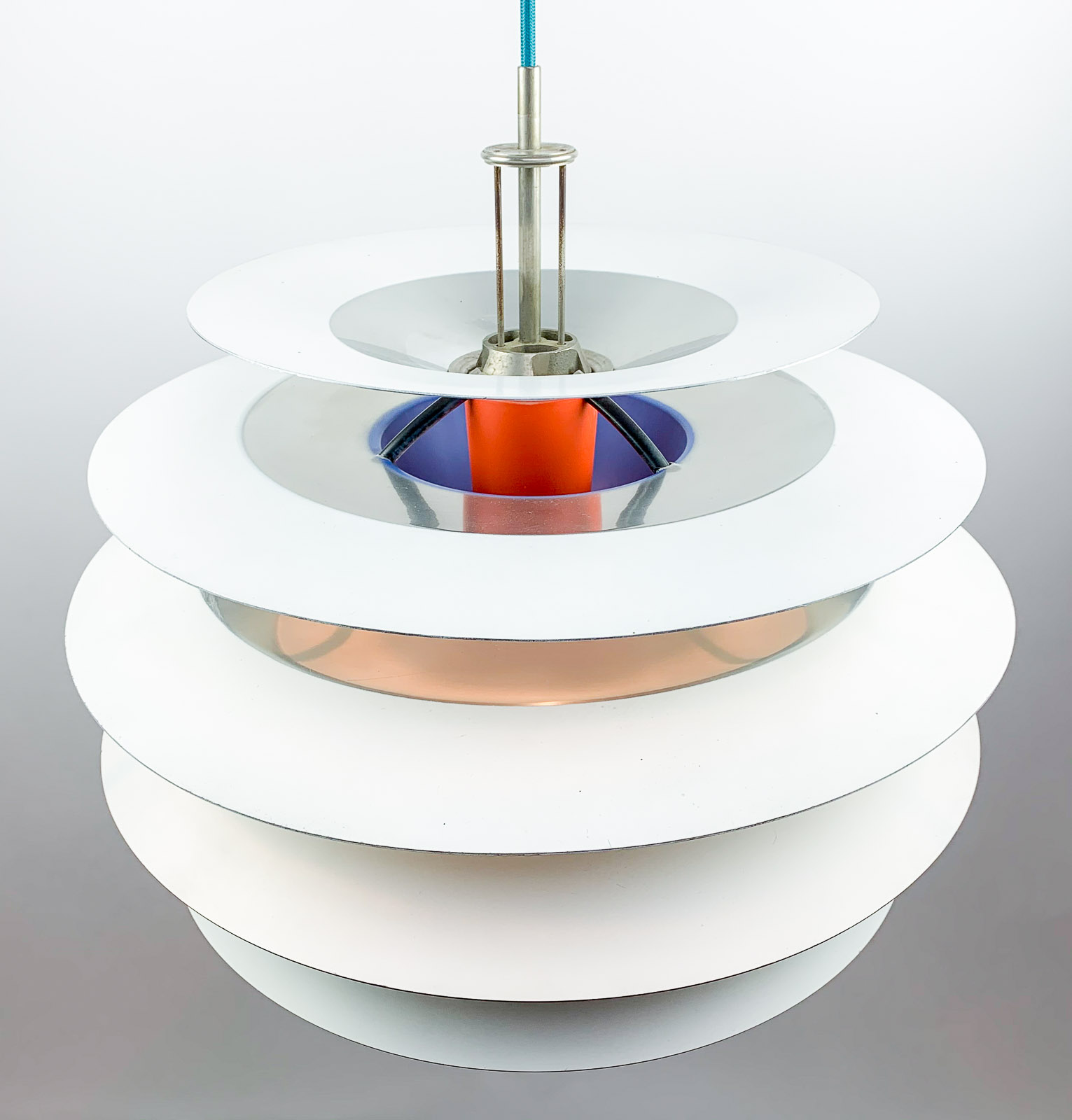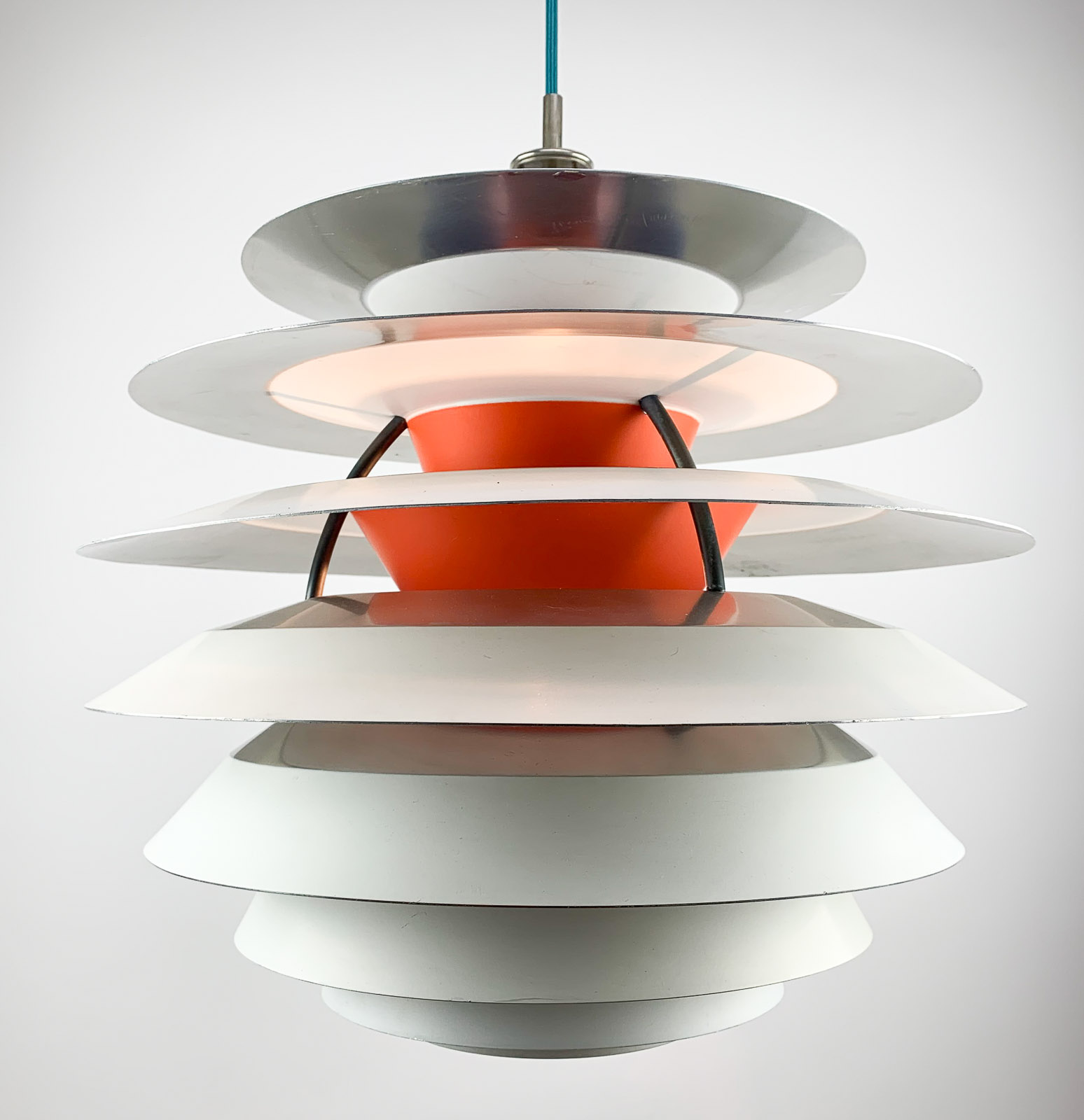Poul Henningsen - "PH Kontrast" pendant - Louis Poulsen, Denmark ca. 1970




Artist
Poul Henningsen (1894 Ordrup, Denmark – 1967 Hillerød, Denmark) was a famous Danish Architect, Designer, Author and Critic. He was one of the leading figures of the Danish cultural live between the two war wars. He is most commonly associated with his design of the PH-lamp series of incandescent lamps.
He started his career with the architect Kay Fisker in 1919. From 1920 onwards, Poul Henningsen freelanced as an architect and designer. His most valuable contribution to design was in the field of glare-free illumination. Henningsen spent developing lighting that was not harsh and glaring but shed warm, soft light.
The first lamps in the "PH" range were shown at the International Exhibition of Modern Decorative and Industrial Arts at Paris in 1925. The PH-lamp which, like his later designs, used carefully analysed reflecting of the light rays from the bulb to achieve glare-free and uniform illumination. His light fixtures were manufactured by Danish lighting manufacturer Louis Poulsen, a company with which Henningsen would build a lifelong working relationship.
During his first year with Louis Poulsen he developed his first PH-lamp for which he won a gold medal on the 1925 world exhibition in Paris.
His best-known designs are most likely the PH Artichoke (1958) and PH5 (1958). His lighting designs created the economic foundation of his later work. Manufacture and sale of some of his lighting fixtures, such as the PH5 Pendant Lamp, continues today.
Other notable designs by him include the PH Grand Piano (1931), examples of which are included in several prominent twentieth-century design collections, including that of the Metropolitan Museum in New York City. In 1946, he re-designed the Glass Hall (Glassalen) for Tivoli Gardens in Copenhagen.
Description
An aluminium and steel pendant light, model “PH Kontrast”, designed between 1958-1962 by Poul Henningsen for Louis Poulsen.
The “PH Kontrast” construction is made of ten aluminium shades held together with three steel supports. Each shade is divided into 4 different treated surfaces: white paint, orange/red paint, blue paint, and polished metal / chromed.
Through a hand operated sliding mechanism around the pendant bar, the lightbulb inside the lamp can be moved up and down. By doing so the light follows different paths through the construction, reflecting on the different coloured surfaces. It was this ability to adjust the light’s colour contrast that gave this lamp its name.
For the manufacturer it was a very complicated and expensive lamp to produce, each “PH Kontrast” needed 130 proceedings to produce. For this reason it was discontinued by Poulsen about 30 years ago.
Price including VAT: SOLD
Louis Poulsen, Denmark circa 1970

